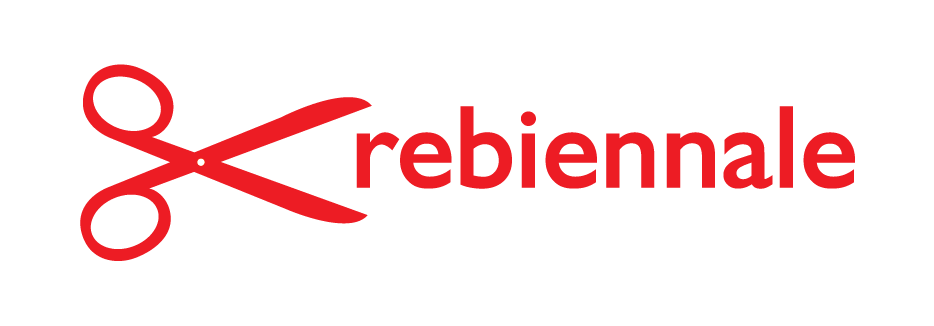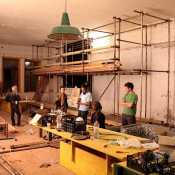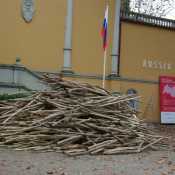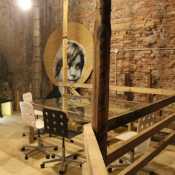Una ricerca condotta dall’Architecture Foundation sui più significativi esperimenti di riutilizzo dei materiali in architettura, analizza il lavoro di Rebiennale dal punto di vista tecnico, logistico ed economico, per tracciare le linee guida di un futuro progetto di riuso dei siti olimpici. Clicca sul lettore Pdf per ingrandire la pagina.
Maggiori informazioni qui:
Architecture Foundation
http://r-urban-wick.net/events/re-use
http://www.interimeast.org/rebienalle/
KEY FACTS:
Project summary: Rebiennale is a collective of architects operating in Venice to reuse and reclaim the left over materials from both the art and architecture biennales that take place in the city each year.
Location: Venice, Italy
Programme: Reuse of materials from the Biennale in order to aid socially engaged projects in Venice.
Initiator: A collective of citizens, political and environmental activists, architects and architecture students.
Project Duration: Conceived in 2008 and is ongoing
Client Team: There is no client for the project though they hope to work more formally with the Biennale itself in the future.
Project Team: Gilulio Grillo and strong network of others.
Funding Sources: No monetary exchange takes place though Rebiennale run a squat that puts on club nights that return a profit.
Funding Type: Self-funded
Profitability/Loss: The project runs on volunteer time and energy. The group owns a boat that they use to transport materials. No money has been made from the concept as yet.
Permissions / Permits: Permissions to enter the site required from the Biennale and contact with individual pavillion curators sought.
Local Links: Rebiennale are strongly embedded in Venetian society. The majority of the materials go towards socially orientated projects and to refurbish their main squat/venue Morion and Sale Docks.
Publicity/advertising: Website, facebook, word of mouth
PROJECT EVALUATION:
Site Details & Ownership:
Rebiennale operates two main sites in Venice (Morion and Sale Docks) and also has a warehouse space on the main land. Both Morion and Sale Docks started as squats and have subsequently been formally handed over to Rebiennale to run – both spaces are free from any rental charges. Sale Docks and the additional warehouse space act as storage for materials. However, storage space is tight and they prefer to select materials for a specific ‘second life’ as they call it rather than take all materials from the Biennale site.
Morion is a squat but can also act as a social hostel for paying guests and as a venue for club nights, which they run on a weekly basis. Sale Docks is an arts and culture venue run by Rebiennale and a group of students. The space hosts exhibitions and events. Both venues were restored using materials from the biennale.
Project Reach / Visitors / Target Audience:
Rebiennale’s main aim is to reuse materials from the Biennale in social and community orientated projects. Its key collaborators are the curators of the individual pavilions and hopefully in the future the Biennale will become its official ‘client’. Rebiennale have a strong network in Venice and also work closely with architecture students and volunteers.
Problems Encountered / Overcome:
The two main problems encountered to date are establishing a good working relationship with the Biennale itself and storage. The project was initiated through a series of conversations in 2008 that included organisations such as 2012Architecten. Since then Rebiennale has been trying to establish a more formal relationship with the Biennale but has up until now been forced to make contact with individual pavilion curators to try and work with them to reuse their materials. This ad hoc way of working has taken up a lot of time and energy on the part of Rebiennale and has limited its reach. Only now in 2012 has the Biennale asked Rebiennale to work with them more formally in 2013. Rebiennale has always worked in a voluntary way and as such has relied on its network and the willingness of people to get involved. Rebiennale owns just one boat to transfer materials and limited storage space. In order for the project to continue and expand it seems that additional space and transportation would be of benefit. It would also be useful if Rebiennale was ‘employed’ as an alternative waste management contractor.
What next?
Rebiennale is looking to work formally with the Biennale in 2013 – the results of which remain to be seen. Rebiennale remains committed to working with the materials from the Biennale for the benefit of community and socially orientated projects. In addition the collective is trying to raise awareness of the high vacancy rate of buildings in Venice and also to actively protest against Venice becoming purely a town to serve tourists.
Complementary Programmes:
Rebiennale run club nights at Morion and exhibitions and events at Sale Docks.
Share this Post



